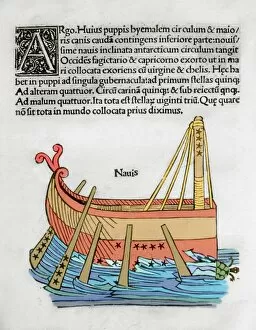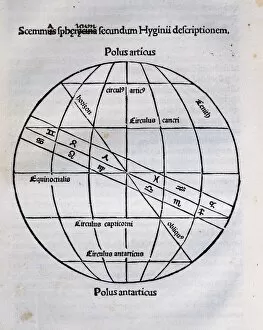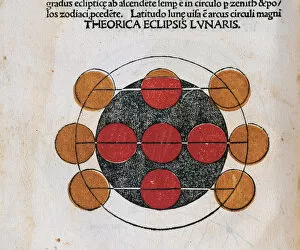Astronomicon Collection
"Astronomicon: A Glimpse into the Celestial World of Ancient Knowledge" Step back in time and immerse yourself in the captivating world of Astronomicon
All Professionally Made to Order for Quick Shipping
"Astronomicon: A Glimpse into the Celestial World of Ancient Knowledge" Step back in time and immerse yourself in the captivating world of Astronomicon, a masterpiece published in Venice in 1485. This remarkable work delves into the depths of celestial wonders, shedding light on our understanding of the universe. One cannot help but be enchanted by the intricate engravings that adorn its pages. The Armillary Sphere, an ingenious device used to study celestial movements, takes center stage as it unveils secrets hidden within the vastness of space. The constellation Argo Navis comes alive through detailed illustrations, depicting the majestic ship sailing across heavenly realms. Its presence serves as a reminder of ancient seafaring tales intertwined with astronomical observations. Venturing further, we encounter theories explaining lunar eclipses and distance measurements meticulously documented within this timeless treasure. These engravings offer glimpses into how early astronomers grappled with unraveling nature's mysteries. The cover itself is adorned with an armillary sphere, symbolizing man's relentless pursuit to comprehend his place among stars. It beckons us to explore further and unlock the secrets held within its pages. Delving deeper still, we uncover insights into Mercury's orbit and solar theory—testaments to humanity's ceaseless quest for knowledge about our neighboring planets and our own star. Mythological interpretations intertwine seamlessly with scientific observations as Andromeda dances across these pages—a testament to mankind's desire to weave stories amidst constellations' twinkling tapestry. Centaur Phyllirides gallops forth from mythological realms onto these engraved plates—an enchanting fusion between astronomy and poetry that captivates both heart and mind alike. As we turn each page, Earth reveals itself through yet another engraving—a reminder that even amid cosmic grandeur lies our humble abode; a speck floating amidst infinite possibilities waiting for discovery.





